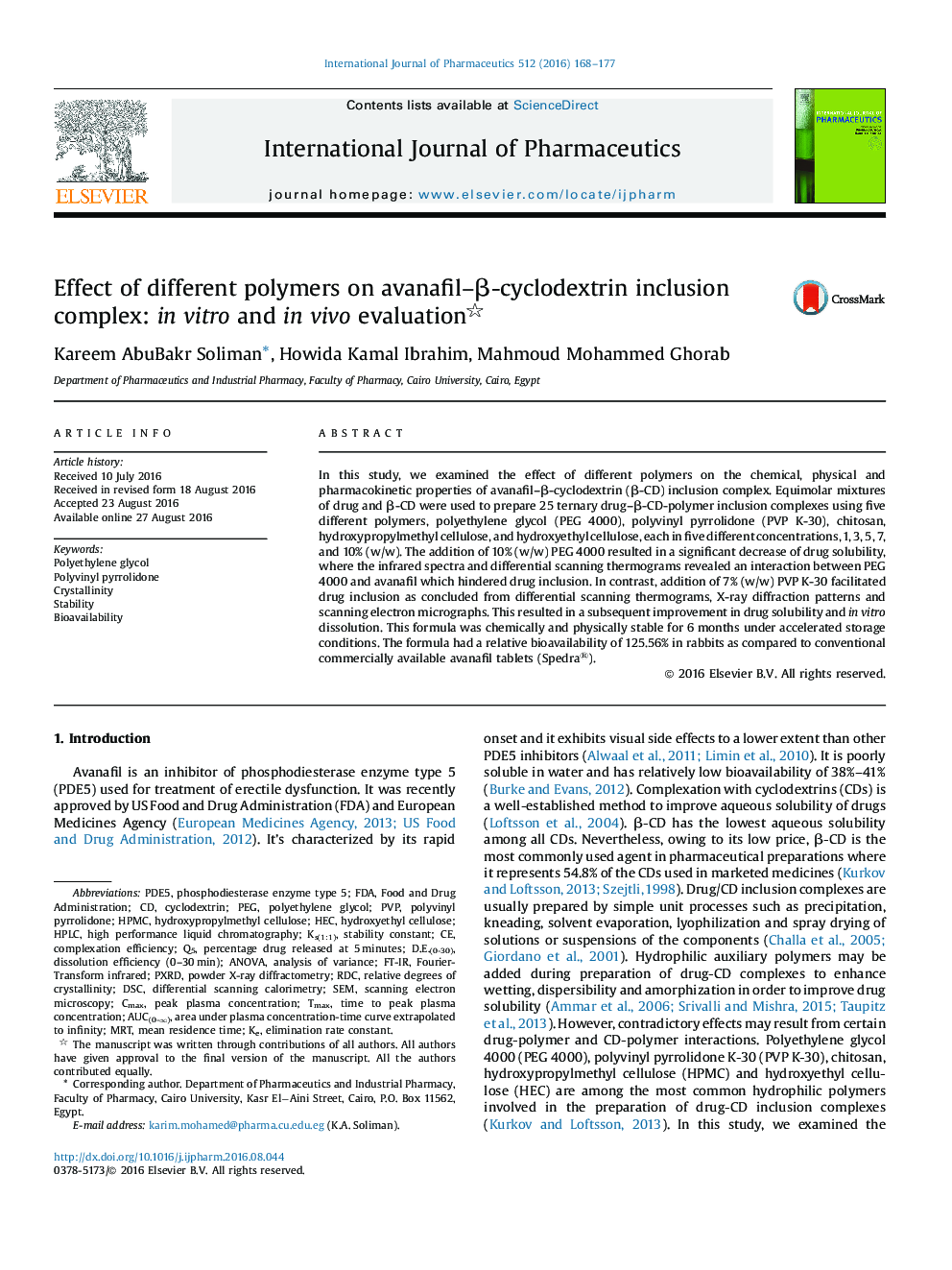| Article ID | Journal | Published Year | Pages | File Type |
|---|---|---|---|---|
| 2500776 | International Journal of Pharmaceutics | 2016 | 10 Pages |
In this study, we examined the effect of different polymers on the chemical, physical and pharmacokinetic properties of avanafil–β-cyclodextrin (β-CD) inclusion complex. Equimolar mixtures of drug and β-CD were used to prepare 25 ternary drug–β-CD-polymer inclusion complexes using five different polymers, polyethylene glycol (PEG 4000), polyvinyl pyrrolidone (PVP K-30), chitosan, hydroxypropylmethyl cellulose, and hydroxyethyl cellulose, each in five different concentrations, 1, 3, 5, 7, and 10% (w/w). The addition of 10% (w/w) PEG 4000 resulted in a significant decrease of drug solubility, where the infrared spectra and differential scanning thermograms revealed an interaction between PEG 4000 and avanafil which hindered drug inclusion. In contrast, addition of 7% (w/w) PVP K-30 facilitated drug inclusion as concluded from differential scanning thermograms, X-ray diffraction patterns and scanning electron micrographs. This resulted in a subsequent improvement in drug solubility and in vitro dissolution. This formula was chemically and physically stable for 6 months under accelerated storage conditions. The formula had a relative bioavailability of 125.56% in rabbits as compared to conventional commercially available avanafil tablets (Spedra®).
Graphical abstractFigure optionsDownload full-size imageDownload high-quality image (149 K)Download as PowerPoint slide
